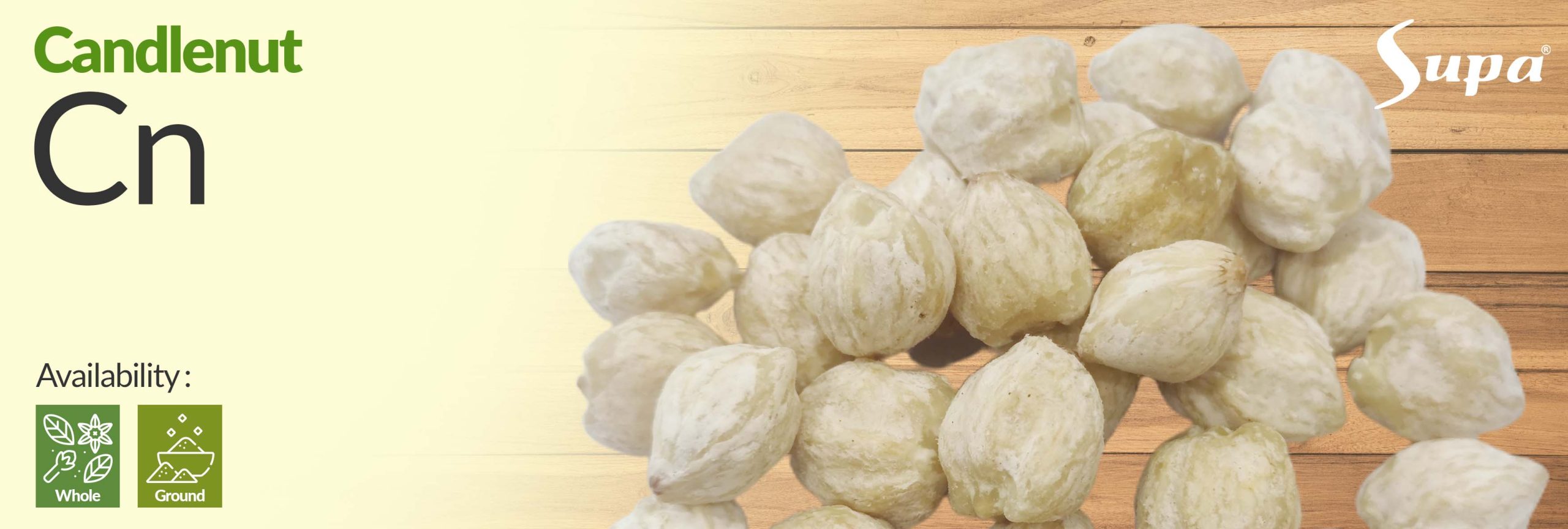
The history of candlenut, scientifically known as Aleurites moluccanus, is deeply rooted in the tropical regions of Southeast Asia and the Pacific. Native to the Moluccas, also known as the Spice Islands, candlenut has been an essential ingredient in the culinary and cultural practices of the region for centuries. The name “candlenut” comes from its traditional use as a candle source, as the nut’s high oil content allows it to burn like a candle when lit.
Candlenuts have a rich history in Indonesian and Malaysian cuisines. They are often used in various dishes, including curries, stews, and sambals, to add a creamy and nutty flavor. Candlenuts are typically ground or crushed before use, as they are toxic when consumed raw due to the presence of cyanide compounds. Properly cooked, candlenuts add a distinct texture and richness to traditional dishes.
Beyond its culinary uses, candlenut has been an integral part of traditional medicine and cultural practices in the region. In some Southeast Asian societies, candlenuts are believed to have protective and magical properties, and they have been used in rituals and ceremonies for spiritual purposes.
With increased international trade and globalization, candlenuts have also found their way into other culinary traditions worldwide. As they are not always readily available outside their native regions, alternatives like macadamia nuts or almonds are sometimes used as substitutes. Despite this, candlenut remains a cherished and significant part of the culinary heritage and cultural identity of Southeast Asia.
Flavor: Candlenut has a rich, creamy, and slightly sweet flavor with a hint of bitterness. When roasted or toasted, the nut's flavor becomes more pronounced, and its natural oils are released, enhancing its taste. Taste: When consumed, candlenut delivers a nutty and buttery taste. It is often used in traditional Indonesian dishes like rendang and sambal to add a subtle nutty undertone and to thicken the sauces. Aroma: Candlenut has a mild and pleasant aroma, similar to other nuts. When ground or crushed, the nut's aroma becomes more apparent and can add depth to the overall fragrance of dishes.
Culinary Ingredient: Candlenuts are widely used in Indonesian, Malaysian, and other Southeast Asian cuisines. They are an essential ingredient in dishes like rendang, sambal, and laksa, adding a creamy and nutty flavor to the recipes. Thickening Agent: Candlenuts are often used as a thickening agent in Southeast Asian cooking. When ground into a paste, they can add a rich and velvety texture to sauces and curries. Spice Paste: Candlenuts are frequently ground into a paste along with other spices and aromatics to create flavorful spice pastes used as a base for various dishes. Roasted Snack: In some cultures, candlenuts are roasted and eaten as a snack. Roasted candlenuts have a nutty and slightly sweet taste, making them a delicious and nutritious treat. Traditional Medicine: In some traditional cultures, candlenuts are believed to have medicinal properties and are used in herbal remedies for various ailments.
Origin : Indonesia Botanical Name : Aleurites moluccana Composition : Candlenut Color : White/Ivory Moisture Content : 5% Shelf Life : 12 Months Loadability : 20 FCL Package : Carton Packing *For more detailed specifications, please feel free to contact us.

